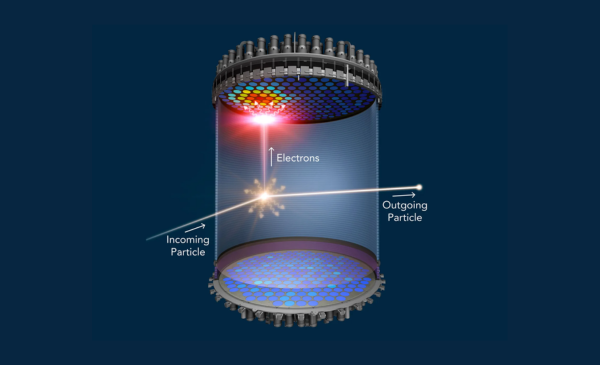Nestled beneath the vibrant cacophony of Naples, a city where chaos weaves a tapestry of life, archaeologist Raffaella Bosso embarks on a silent journey through an underground labyrinth, tracing the steps of civilizations back 2,300 years. In the depths beneath Italy’s most animated city, the echoes of the Ancient Greeks resonate, their legacy inscribed within hidden burial chambers.

With her flashlight cutting through the darkness, Bosso reveals a tombstone’s ancient narrative, showcasing the final resting place of a man and woman encapsulated in stone, a sight less common in a space where eight or more individuals could be interred. Unearthed in 1981 through traditional excavation, this site now stands at the crossroads of history and cutting-edge science.
In an unprecedented collaboration, archaeologists are swapping their pickaxes for the precision of particle physics, employing compact, microwave-sized subatomic particle detectors to penetrate the mysteries veiled by centuries and solid rock. Particle physicist Valeri Tioukov demonstrates the power of this technology, likening it to an advanced form of radiography, capable of revealing secrets behind walls adorned with ancient frescoes without the destruction of a single brick.
Nestled beneath a modern apartment building, these tools confirm the presence of long-suspected hidden chambers, offering a non-invasive glimpse into the past. Tioukov invites us into his University of Naples lab, where the team analyzes data collected by their muon detector. Muons, cosmic remnants of the Big Bang, traverse the burial chamber, painting an invisible picture of its contents by their absorption and deflection patterns. Capturing around 10 million muons over 28 days, the researchers unveil a three-dimensional model of a sealed chamber, unseen by human eyes for centuries, now revealed through the lens of particle physics.

This marvel of modern science, merging archaeology with the frontiers of physics, offers more than just insights into ancient civilizations. Professor Giovanni De Lellis highlights its broader applications, from exploring the hidden chambers of Egyptian pyramids to advancing cancer treatment by assessing potential damage to surrounding healthy tissues. This technology, with its unprecedented accuracy, heralds a new era of discovery and understanding, promising breakthroughs across a spectrum of fields.
In March 2024, Naples becomes not just a testament to the past but a beacon for future exploration, demonstrating the limitless potential when history meets the cutting edge of science. This is not merely an advancement in archaeological methods; it’s a transformative journey into the unknown, powered by the very particles that form the fabric of the universe.

Subtly charming pop culture geek. Amateur analyst. Freelance tv buff. Coffee lover
